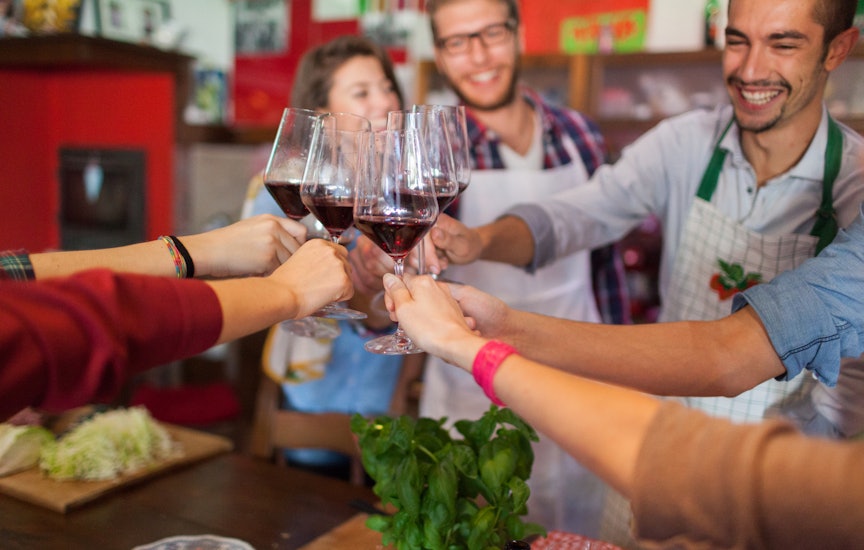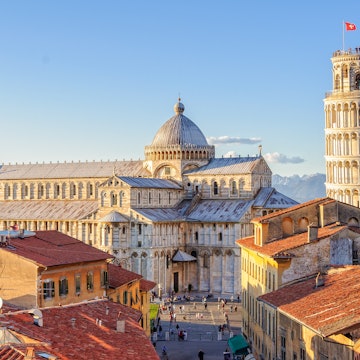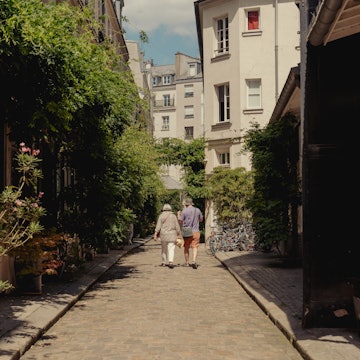

A street artist near the Cathedral of Santa Maria del Fiore. Brester Irina/Shutterstock
Recognized as a World Heritage Site by UNESCO since 1982, the historic center of Florence boasts a vast collection of medieval and Renaissance art and architecture, despite its relatively compact size.
Originally bounded by its 14th-century city walls – partially removed during the 19th-century renovation of the city – inner Florence is split in half by the Arno River, which runs under the historic Ponte Vecchio linking the two sides of the city.
Each neighborhood is typically centered around a square where markets, religious celebrations and public events once took place in the centuries past. While the tourism industry has transformed the city, bringing in millions of visitors each year and creating an increasingly international atmosphere, Florence’s districts have continued to maintain a distinct identity – each offering the chance to discover a different side of the city’s character.
This is everything you need to know about exploring the delightful districts in this stunning Renaissance city.

1. Piazza del Duomo & Piazza della Signoria
Best for art and architecture
Most of Florence’s globally famous icons are concentrated in the city’s core – the area roughly stretching from Piazza del Duomo to Piazza della Signoria. Topped by Filippo Brunelleschi’s red-tiled dome, the impressive Cattedrale di Santa Maria del Fiore took over 140 years to build, standing as Florence’s main religious structure since the late 15th century.
The church's intricately carved marble facade (added in the 19th century) is a spectacle worth admiring from up close, before or after a visit to the Museo dell'Opera del Duomo, the Cathedral, the Baptistery and Giotto's Bell Tower. It is possible to climb both the Duomo and the Bell Tower for a bird's eye view of the terracotta-covered Florentine rooftops – that is, if you're ready to tackle hundreds of narrow steps to the top (if you're not a fan of confined spaces, maybe skip this option).
Connecting Piazza del Duomo and Piazza della Signoria is the bustling Via dei Calzaiuoli, one of the city center’s busiest arteries. Short detours lead to Piazza della Repubblica, the contemporary art museum of Palazzo Strozzi, and the medieval buildings housing Dante’s museum.
Once you reach Piazza della Signoria, you’ll find yourself under the shadow of Torre di Arnolfo, the clock tower marking the castle-like Palazzo Vecchio, the city’s center of power for the past seven centuries. This is where the Medici ruled over Florence and commissioned projects such as the Uffizi – the galleries found a few steps away once functioned as administrative offices. They now house Florence’s most important art museum. Step inside to admire works by Giotto, Botticelli, Raffaello, Caravaggio, Leonardo Da Vinci, Michelangelo and many more.
2. Santa Maria Novella
Best for transport links
Branching out from the Santa Maria Novella railway station, this is Florence’s transport hub. With high-speed trains reaching Florence from most major Italian cities, this is often the first point of contact with the city. Hectic and diverse, the neighborhood is well connected to the major sights in the city – a ten-minute walk takes you directly to the Duomo and the central market.
The imposing Basilica di Santa Maria Novella – founded by Dominican monks in the 13th century – marks the heart of the neighborhood, facing Museo Novecento across the square. Take some time to admire the symmetrical facade rich in symbolism designed by Leon Battista Alberti before entering the church to see works by Giotto, Masaccio and Ghirlandaio.
For a change from the Gothic and Renaissance masterpieces, pay a visit to Street Levels Gallery, the first urban art gallery in Florence exhibiting works by many Italian street artists.
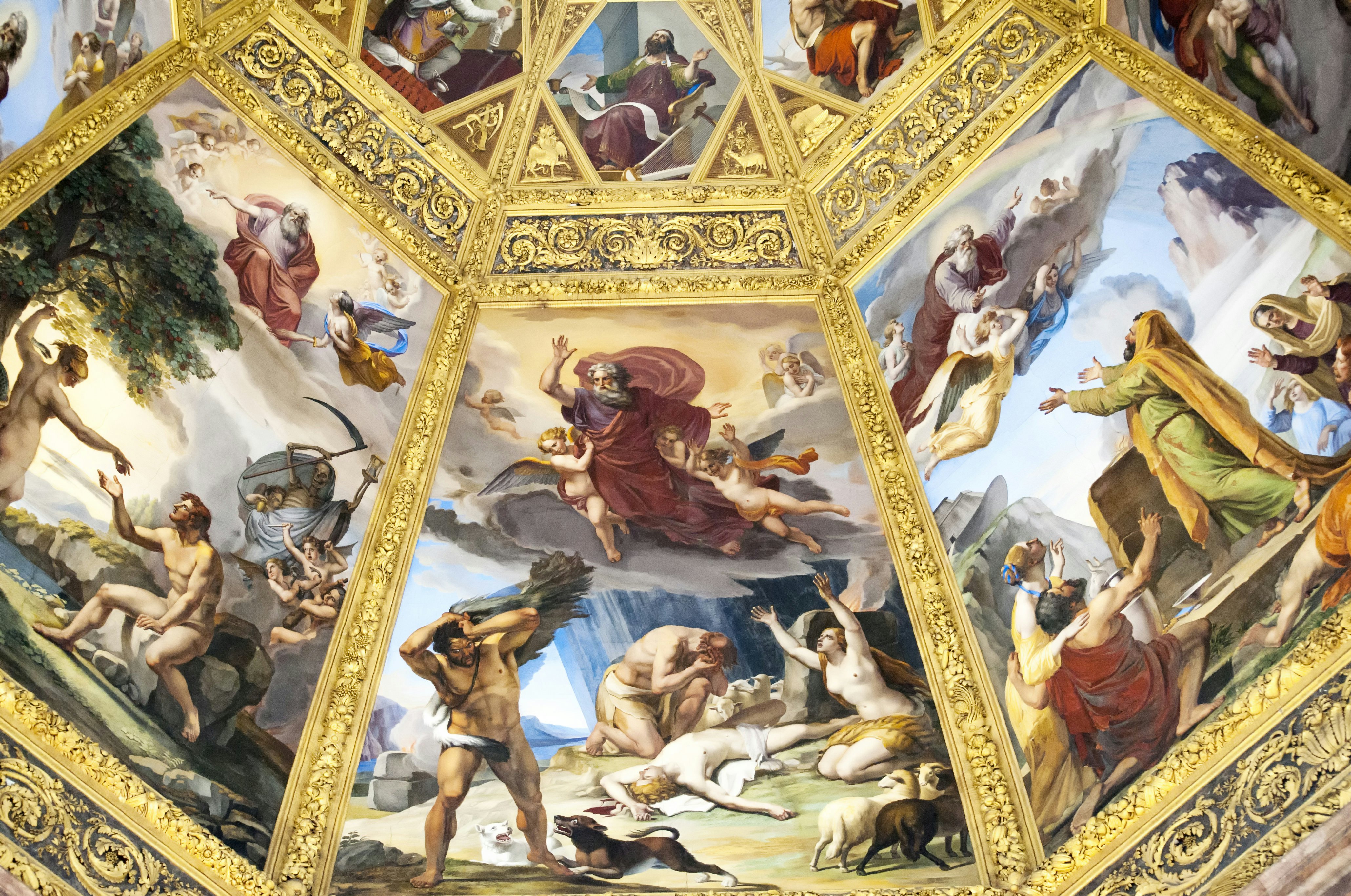
3. San Lorenzo & San Marco
Best for market atmosphere and Renaissance icons
Easily reached from Florence’s railway station through Via Nazionale, lively San Lorenzo expands around the city’s largest market. Crowded, loud and multicultural, the commercial corner of the city is where you’ll find both mass-produced souvenirs and century-old enotecas standing side by side. The central market’s outdoor area is primarily dedicated to leather goods, while a 19th-century building houses two floors of stalls selling anything from fresh produce to traditional meals.
Shopping isn’t all there is to do in San Lorenzo. In this neighborhood, you can trace the history of the Medici family, who ruled over Florence for 300 years and left an indelible mark on its heritage. The Palazzo Medici Riccardi was their first Florentine residence, while in the Cappelle Medicee museum, you’ll find the monumental tombs of some of the most prominent members of the dynasty, including those contained in Michelangelo’s spectacular Sagrestia Nuova.
The San Marco neighborhood, stretching north of San Lorenzo, is Florence’s university hub. The student population gathers on the staircases of Piazza Santissima Annunziata in the late afternoon, and most of the university-managed museums – such as the Giardino dei Semplici botanical garden and the Museum of Natural History – are found in the area.
San Marco hosts Michelangelo’s best-known masterpiece – David. Steps away from Piazza San Marco is Galleria dell’Accademia, where the Renaissance icon is exhibited. This is not the only major museum in the area – tour the neighborhood to see the works of Beato Angelico at Museo San Marco and find 15th-century paintings at Museo degli Innocenti.
4. Santa Croce & Sant’Ambrogio
Best for late night drinks
Piazza Santa Croce extends under the shadow of the majestic Basilica di Santa Croce, designed by Arnolfo di Cambio in the late 13th century and embellished with a neogothic facade by Jewish architect Niccolò Matas in 1863. In June, the square is transformed into a sand arena on the occasion of the Calcio Storico tournament, where Florence’s historic districts compete in a brutal game that blends elements of soccer, rugby and boxing.
At night, Santa Croce becomes a playground for the thousands of exchange students that seasonally populate the neighborhood. Enter pubs like Lion’s Fountain, Kikuya or Red Garter, and you’ll hear hardly any Italian spoken. Locals tend to flock to the Sant’Ambrogio area, less than one kilometer from Santa Croce, gathering outside of bars such as Enoteca alla Sosta dei Papi, Art. 17 and I Macci.
Sant’Ambrogio is also home to Florence’s oldest market, running since 1873. Visit during the day to stock up on fruit and vegetables or stop for lunch in the food court found inside the market’s covered hall.

5. San Frediano & Santo Spirito
Best for aperitivo, crafts and design
Jointly referred to as the “Oltrarno” – meaning “on the other side of the Arno” – the neighborhoods of San Frediano and Santo Spirito are dotted with bars, vintage stores, ateliers and restaurants.
Starting from the post-war period, many Florentine artisans began moving their workshops to this part of the city, drawn to the Oltrarno due to the area’s cheaper rents. Framers, bookbinders, sculptors and tailors came to define the character of the historically working-class district. Much has changed over the course of the past couple of decades as both San Frediano and Santo Spirito have been transforming under the pressure of tourism in line with the rest of the city. Yet, despite the visible gentrification, these areas remain dedicated to creativity and crafts.
Visit on the second Saturday of the month to find the city’s favorite antiques market in Piazza Santo Spirito, stop at Sbrino for a taste of their artisanal gelato, or come by in the late afternoon for an aperitivo at Volume.
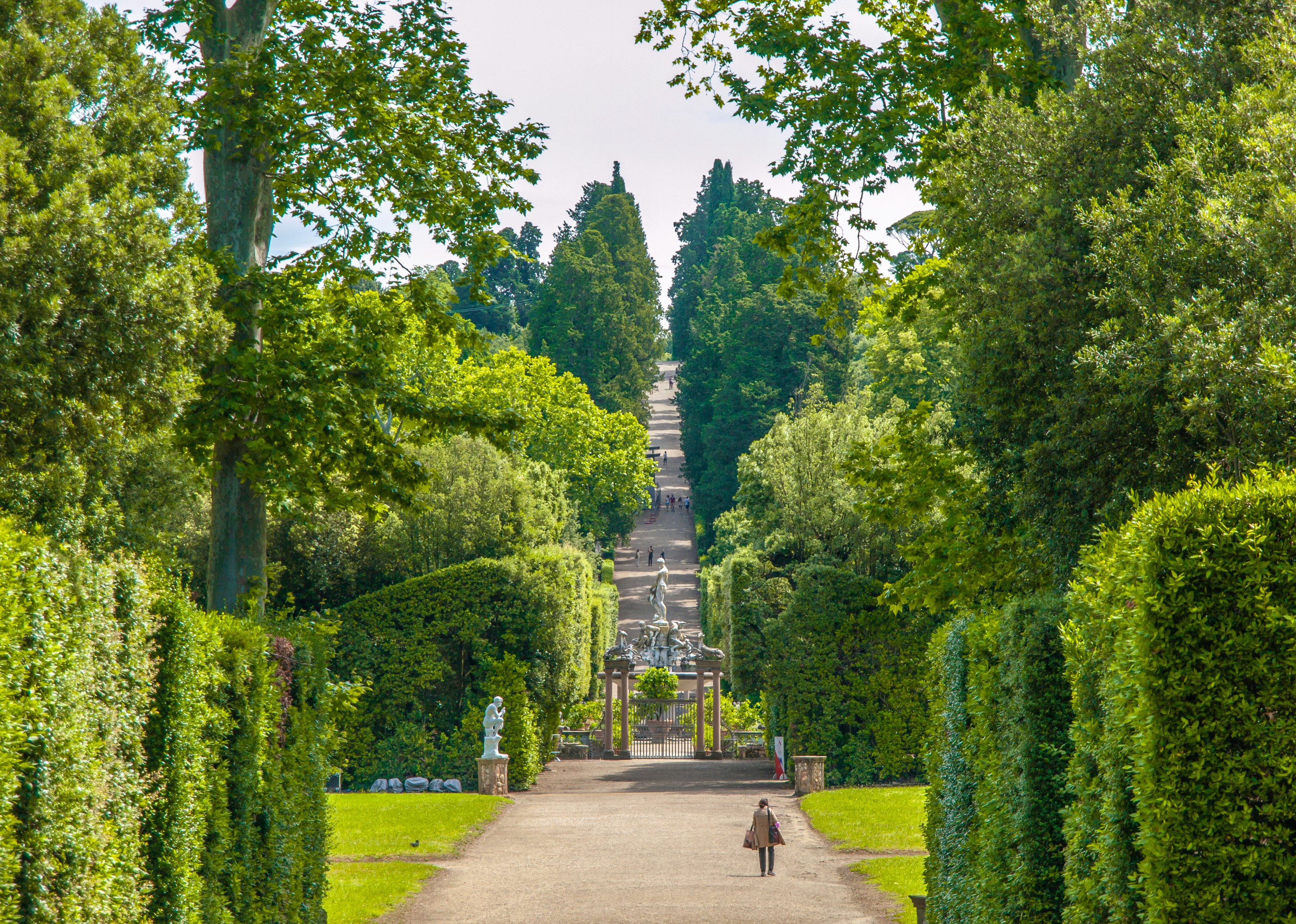
6. Boboli, San Niccolò & San Miniato
Best for gardens and city views
Behind Palazzo Pitti, the last residence of the Medici family, are the Boboli Gardens, one of the pioneering examples of Italian landscape architecture built during the Renaissance, which would eventually influence aristocratic gardens all over Europe.
On the eastern side of the Oltrarno, the city climbs up on the San Miniato Hill, reaching Piazzale Michelangelo and Basilica di San Miniato al Monte, two prime spots for admiring Florence from above. As you walk through the paths leading on top of the hill, you’ll notice the stark difference with the rest of the city – it’s not a coincidence.
Following the unification of Italy in 1861, Florence was named the capital for a brief period of time. A redevelopment project was commissioned to architect Giuseppe Poggi, who took up the responsibility of modernizing the city, adding large avenues for motorized vehicles and monumental squares like those seen in other major European urban centers.
To achieve his objective, Poggi tore down the ancient city walls found in the San Niccolò district (only the city gate, Torre San Niccolò, still stands), constructed a monumental walkway and built Piazzale Michelangelo, the terrace overlooking Brunelleschi’s Duomo in one of the highest locations in the city marked by a bronze copy of Michelangelo’s David.







